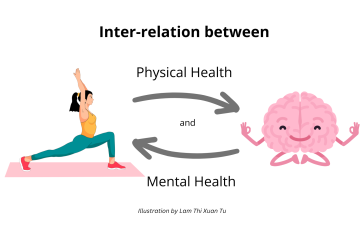The health and wellness sector is dynamic, constantly evolving with new trends and innovations aimed at improving overall well-being. As we progress further into the 21st century, several key developments are shaping how we approach health, fitness, nutrition, and mental well-being. This article explores some of the latest trends and developments that are redefining the health and wellness landscape.
1. Personalized Nutrition
One of the most significant trends in health and wellness is the shift towards personalized nutrition. This approach tailors dietary recommendations based on an individual’s genetic makeup, lifestyle, and specific health needs. Companies like Nutrigenomix and 23andMe offer DNA testing that provides insights into how your body responds to different foods and nutrients. This allows for a more customized diet plan that can improve health outcomes, enhance athletic performance, and prevent chronic diseases.
2. Mental Health and Wellness
Mental health awareness has grown exponentially in recent years, partly due to the global pandemic’s impact on collective mental well-being. There’s a notable increase in the adoption of mental health apps such as Headspace, Calm, and BetterHelp, which provide meditation, therapy, and mindfulness resources. Employers are also recognizing the importance of mental health, offering more robust employee wellness programs that include mental health days, stress management workshops, and access to counseling services.
3. Wearable Technology and Health Monitoring
Wearable technology continues to revolutionize the health and wellness industry. Devices like Fitbit, Apple Watch, and Garmin are now equipped with advanced features that monitor heart rate, sleep patterns, and even detect potential health issues like atrial fibrillation. The integration of AI and machine learning allows these devices to provide more accurate and personalized health insights, motivating users to maintain a healthy lifestyle and catch health issues early.
4. Plant-Based and Sustainable Diets
The popularity of plant-based diets is on the rise, driven by growing awareness of environmental sustainability and animal welfare. This trend is supported by the increasing availability of plant-based meat alternatives from companies like Beyond Meat and Impossible Foods. Additionally, the flexitarian diet, which encourages primarily plant-based foods while allowing occasional meat and fish consumption, is gaining traction. This approach is celebrated for its health benefits and lower environmental impact.

5. Functional Foods and Beverages
Functional foods and beverages, which provide health benefits beyond basic nutrition, are becoming mainstream. Products infused with probiotics, prebiotics, adaptogens, and other beneficial compounds are designed to improve gut health, enhance cognitive function, and boost the immune system. Kombucha, kefir, and functional mushroom coffees are just a few examples of these health-promoting consumables.
6. Telehealth and Virtual Care
Telehealth has seen unprecedented growth, accelerated by the COVID-19 pandemic. Virtual consultations, remote monitoring, and digital therapeutics are becoming standard practice. This trend not only makes healthcare more accessible but also reduces the strain on traditional healthcare facilities. Innovations in telehealth technology are continuously improving the quality of virtual care, making it a viable option for managing chronic conditions and maintaining regular health check-ups.
7. Fitness and Exercise Innovation
The fitness industry is embracing technological advancements to enhance workout experiences. Virtual fitness platforms like Peloton and Mirror offer live and on-demand classes that bring the gym experience to the home. Additionally, there is a growing interest in high-intensity interval training (HIIT), functional fitness, and holistic approaches like yoga and Pilates. These trends reflect a shift towards more versatile and accessible fitness options that cater to diverse preferences and lifestyles.
8. Holistic and Integrative Health Approaches
Holistic health approaches, which consider the whole person—body, mind, and spirit—are gaining popularity. Integrative medicine combines conventional Western medicine with alternative therapies such as acupuncture, chiropractic care, and herbal medicine. This trend is driven by a growing recognition of the interconnectedness of physical and mental health and a desire for more comprehensive and personalized healthcare solutions.
9. Workplace Wellness Programs
Employers are increasingly investing in workplace wellness programs to boost employee health and productivity. These programs often include fitness challenges, healthy eating initiatives, mental health resources, and stress management workshops. The goal is to create a supportive work environment that promotes overall well-being and reduces healthcare costs. Innovative companies are also exploring the use of gamification to make wellness programs more engaging and effective.
10. Sleep Health
Recognizing the critical role of sleep in overall health, there is a rising focus on improving sleep quality. Wearables and smart home devices that monitor and enhance sleep patterns are becoming popular. Products like weighted blankets, blue light-blocking glasses, and sleep aids are designed to create optimal sleep environments. Furthermore, sleep health education is being integrated into wellness programs, emphasizing the importance of good sleep hygiene.
11. Gut Health
The gut microbiome is increasingly recognized as a key player in overall health. Research linking gut health to immune function, mental health, and chronic disease prevention has led to a surge in interest in probiotics, prebiotics, and fermented foods. Consumers are seeking products and dietary changes that support a healthy gut microbiome, contributing to better digestion, mood, and immune health.
12. Digital Detox and Mindful Technology Use
As our reliance on technology grows, so does the need for digital detoxing. People are becoming more aware of the potential negative impacts of excessive screen time on mental health and well-being. Mindful technology use, which involves setting boundaries and intentionally unplugging, is a growing trend. Apps and tools that encourage digital well-being, such as screen time trackers and focus enhancers, are helping individuals maintain a healthier balance with their digital lives.
Conclusion
The health and wellness sector is witnessing rapid advancements and shifts in consumer preferences. From personalized nutrition and mental health awareness to wearable technology and sustainable diets, these trends reflect a holistic approach to well-being. As we continue to navigate the complexities of modern life, these innovations offer promising solutions for enhancing our physical, mental, and emotional health. Staying informed about these trends can help individuals make better choices for their health and wellness journey, ultimately leading to a happier, healthier life.






